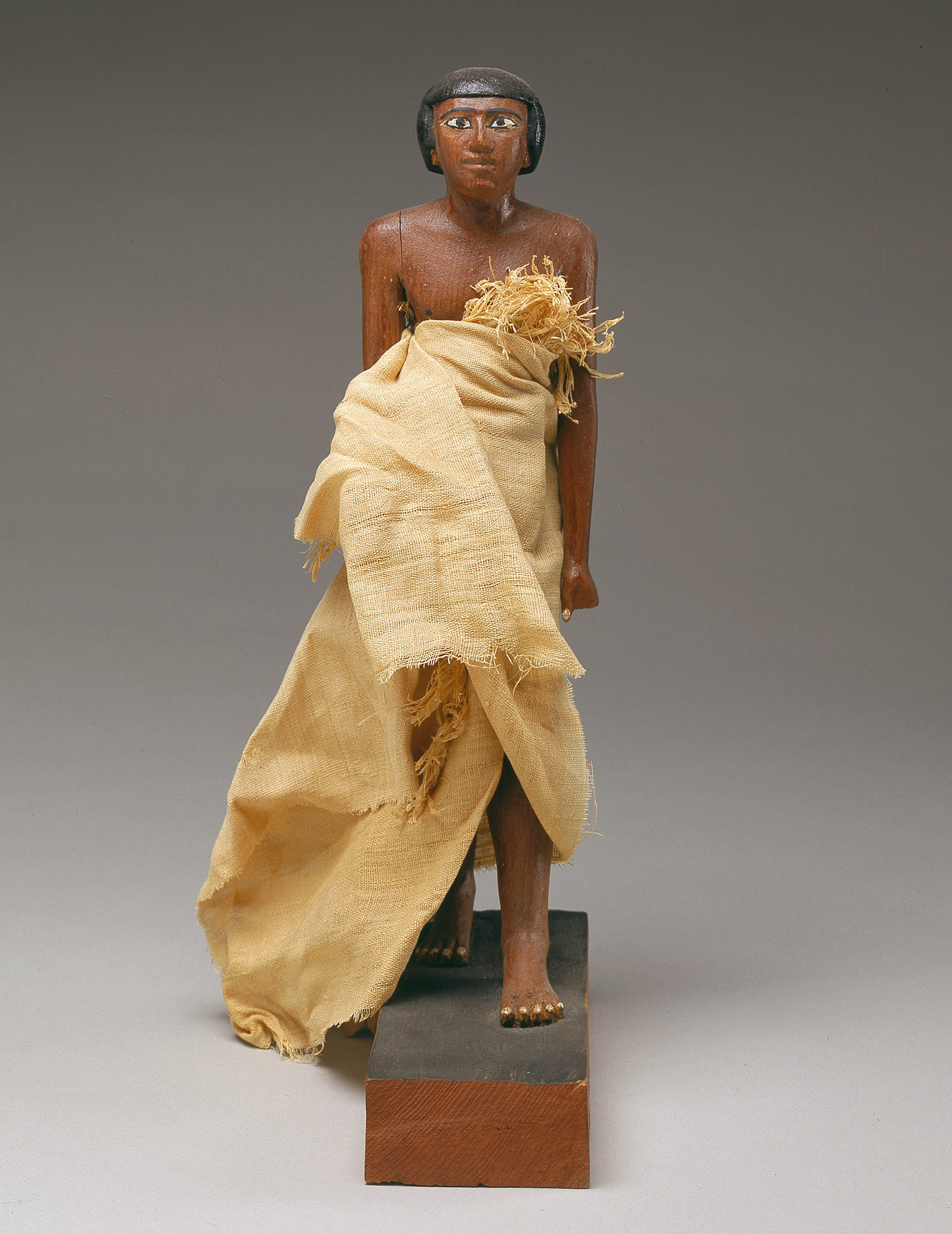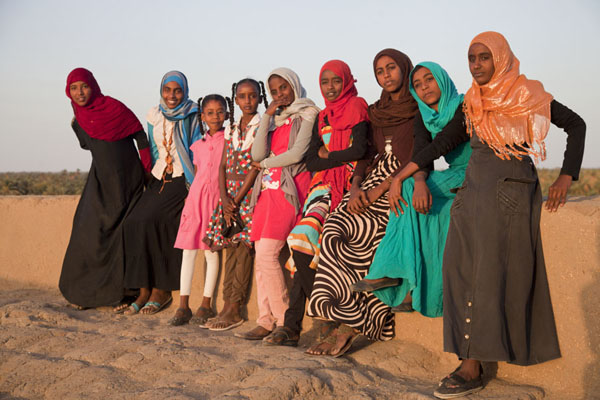The art work is Coptic style.
And what of Nuba wrestling or South Sudanese cattle culture?
Language most likely came from Afro-Asiatic Cushytic people so I don't think that gives you any merit to being a different people.
And I've read of numerous sites being found in Sudan that worship Isis and Amun Ra but I'll look into it further when I have time.
At the end of the day, it is undeniable that North Sudanese phenotype is not anything like their ancestors given the Arab blood. Its like saying African Americans are the direct ancestors of Ife Culture in Nigeria.
The art work is Coptic style.
Let say Byzantine art, however there is a obvious difference of color of apostles and the different officials, so it is safe to say they depicted themselves how they looked. If you go to the second floor of the National museum in Khartoum you see many examples of Queens, Eparchs, Priests, and other officicals during the Christian period.
Language most likely came from Afro-Asiatic Cushytic people so I don't think that gives you any merit to being a different people.
Half the monuments in Northern Sudan are in the Afro Asiatic language along with Nilosaharan during the meriotic period, but myself, some Sudanese and Egyptian that really study this subject without biase have our theories of what may transpired., in fact the temple of Jebel Barkal today northern Sudan is where the pharaohs during the New Kingdom period was crown and possibly the center of that culture, and there are many monuments in Sudan dating to that period.
Also take a slight look at this.
"
Various
pharaohs of
Nubian origin are held by some Egyptologists to have played an important part towards the area in different eras of Egyptian history, particularly the
12th Dynasty. These rulers handled matters in typical Egyptian fashion, reflecting the close cultural influences between the two regions.
...the XIIth Dynasty (1991–1786 B.C.E.) originated from the Aswan region. As expected, strong Nubian features and
dark coloring are seen in their sculpture and relief work. This dynasty ranks as among the greatest, whose fame far outlived its actual tenure on the throne. Especially interesting, it was a member of this dynasty that decreed that no
Nehsy (riverine Nubian of the principality of Kush), except such as came for trade or diplomatic reasons, should pass by the Egyptian fortress and cops at the southern end of the Second Nile Cataract. W
hy would this royal family of Nubian ancestry ban other Nubians from coming into Egyptian territory? Because the Egyptian rulers of Nubian ancestry had become Egyptians culturally; as pharaohs, they exhibited typical Egyptian attitudes and adopted typical Egyptian policies. (Yurco 1989)
[19]
How they depicted themselves
https://en.wikipedia.org/wiki/Nubia
In the New Kingdom, Nubians and Egyptians were often so closely related that some scholars consider them virtually indistinguishable, as the two cultures melded and mixed together
New kingdom period.
Typical Northern Sudanese villagers along the nile valley near the ruins of New Kingdom monuments.
.
And what of Nuba wrestling or South Sudanese cattle culture?
Nuba wrestler indeed, that i agree with. and they were depicted something like this.
Those were groups as some scholars speculated that live further south, and that i do agree with but scholar know there definitely differences among different groups in the region.
For example this group.
who scholars speculated were further north, and read what they say.
here is evidence, however, that demonstrates that the black-skinned Nubians came from below the third cataract. After a series of Nubian uprisings during the Middle Kingdom, Sesostris III led an army into the Sudan and defeated the rebels. He set up a commemorative stela at Semna (37 miles south of Halfa). The famous stela warns Negroes not to pass beyond that point, unless they are on their way to market.
22 There are no accompanying descriptions of the Negroes given.
Egyptian sources are mute about the southern Negroes during the time period of upheaval called the Second Intermediate Period, (1780-1551 B.C.). There is
reason to believe that Sesostris III’s Negro enemy is the same foe faced by Thutmose I during the New Kingdom. Thutmose I erected a victory stela celebrating his triumph over a certain people who lived below the third cataract. The inscription boasts, “He has overthrown the chief of the Nubians; the Negro is helpless. . . . There is not a remnant among the kinky-haired who came to attack him."
23 The Egyptian word translated kinky-haired is accompanied by a lock of hair as a determinative. The epithet “kinky-haired” is used synonymously with the name “Negro.” The parallel construction implies that the distinctive feature about the southern Nubians, or Negroes, is their kinky-hair."
This literary evidence suggests that Nubian physical types varied regionally."
Egyptian art also depicts a regional distinction in Nubian physical types.24 During the Old and Middle Kingdoms, Egyptian rule extended to around the third cataract. Nubians are portrayed with skin of varying shades of darkness, distinctive dress and the facial features of an Egyptian. When the New Kingdom
extended its rule south beyond the fourth cataract, there was a corresponding change in the artist’s portrayal of the Nubian. The Southerners are shown with
distinct Negroid features—dark skin, everted lips, prognathous jaws and kinky hair (See Figure 10). All of the ancient Nubian wrestlers share a physiognomic similarity to the south-Nubian Negroes alluded to in the Egyptian sources.
http://www.occasionalwitness.com/content/nuba/02Culture04wrestling.htm
We were discussing this on Sudanese forums.
The suggestion that the ancient Nubian wrestlers came from regions to the south of the fourth cataract seems to be confirmed by anthropological evidence. 25 Archaeologists examined a burial site at Gebel Moya and other hills in the Gezira of Sudan where remains date back to earlier than the twenty-fifth dynasty in Egypt. According to one of the archaeologists, “the cemeteries of this site have yielded the remains of a tall coarsely built Negro or Negroid race with extraordinarily massive skulls and jaws."26 There is a strong possibility that the southern Nubians portrayed in the wrestling scenes came from this part of the Sudan. Anthropologists further suggest that the Negro type of the Gezira hills immigrated to the Nuba hills of southern Kordofan. The image of the tall, dark and extremely muscular Nubian is strikingly reminiscent of the Nuba of southern Kordofan in the Sudan. These people have remained sheltered in the remote hill country from outside influences and are surrounded by people that are physically and linguistically different from them.27 Indeed, of the various people in the Sudan, none would seem better fit to be the descendants of the ancient Nubian wrestlers than those of the Nuba hill tribes of southern Kordofan
Good luck to that one, only in the North in the desert you will find those remains of ancient beliefs along with statues of Amun, among other "gods" they worshiped.
This is what some southern group use to and some still do believe.
https://en.wikipedia.org/wiki/Dinka_religion
http://www.philtar.ac.uk/encyclopedia/sub/nuer.html
Since you want to get a understanding of the history, here is a link to our forum. Follow the conversation of the poster Ta Seti and NubianKing, The poster "Ta seti" who happen to be Dinka and knows his stuff, and scholars now confirm what we speculated to a degree.
http://www.sudanforum.net/showthread.php?t=89291&page=5
http://www.sudanforum.net/showthread.php?t=59166&page=3
At the end of the day, it is undeniable that North Sudanese phenotype is not anything like their ancestors given
A good percentage of us look very horn-like
http://www.1sudan.com/city/الخرطوم/listing/afra-mool/
http://www.1sudan.com/wp-content/uploads/2014/02/Afra-mool.jpg
Sudanese(main population in the mall in khartoum).
There are other looks of course, but a considerable percentage.
Horner (Afar Man)
Coincidence?
and i leave at that.
Let discontinue the discussion or debate on this thread, but i am more than willing to discuss it on another thread pertaining to the subject. Other than that i am done.
Salam.




























